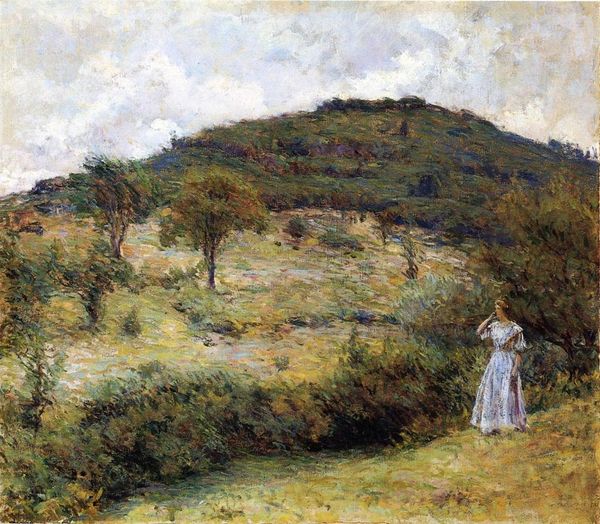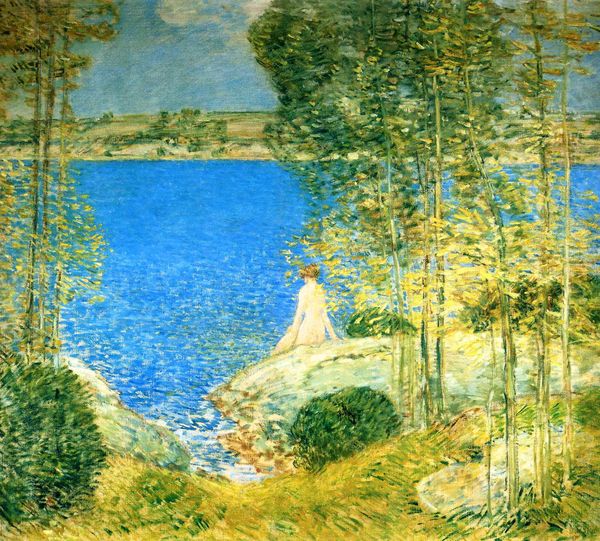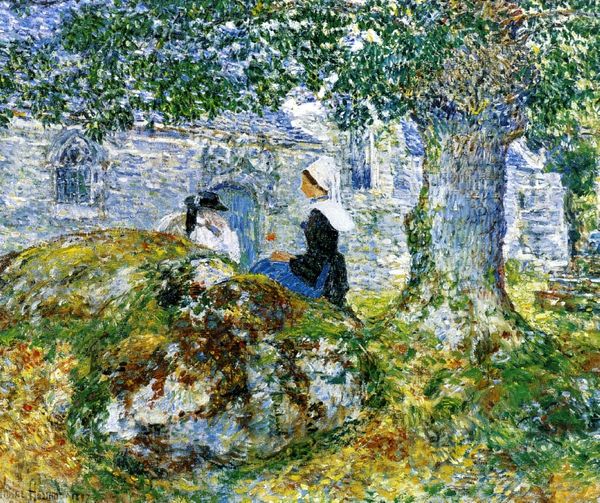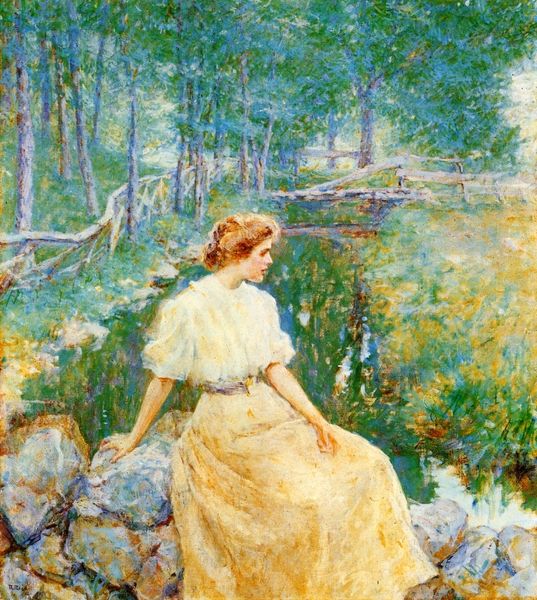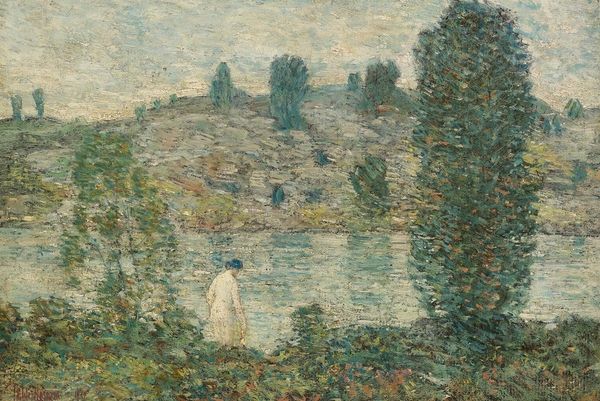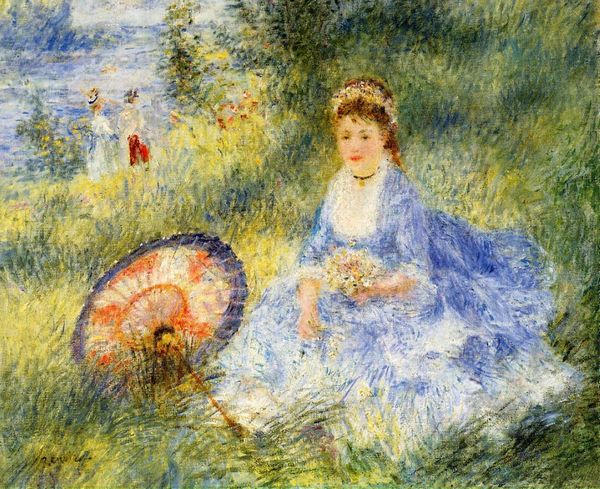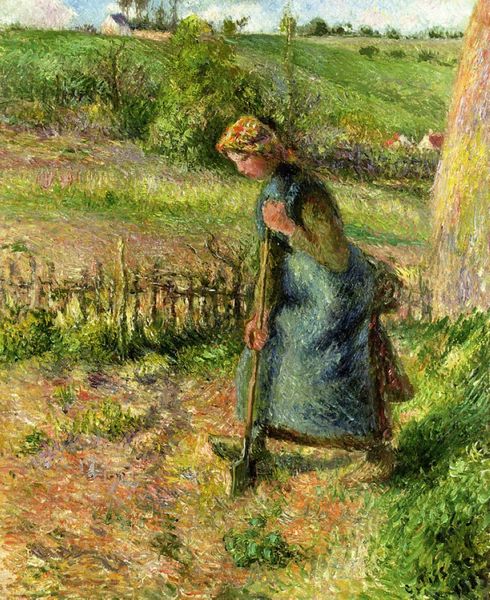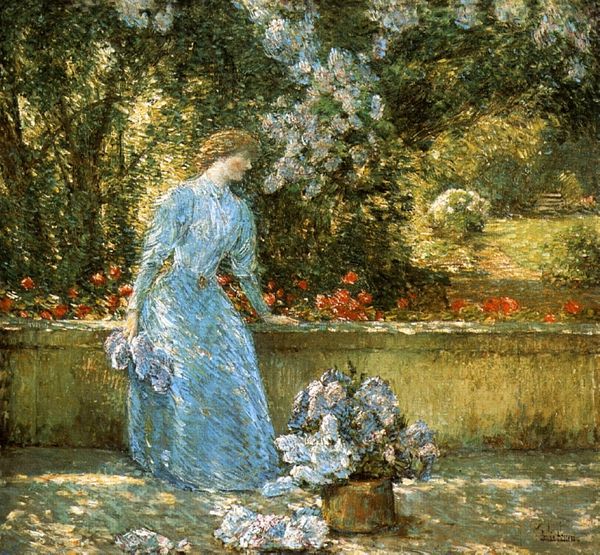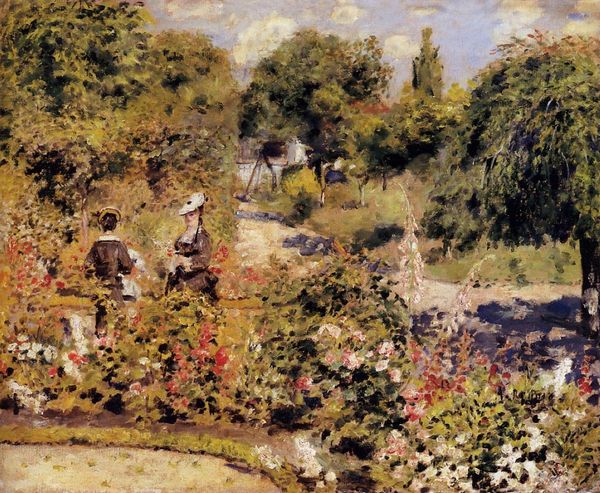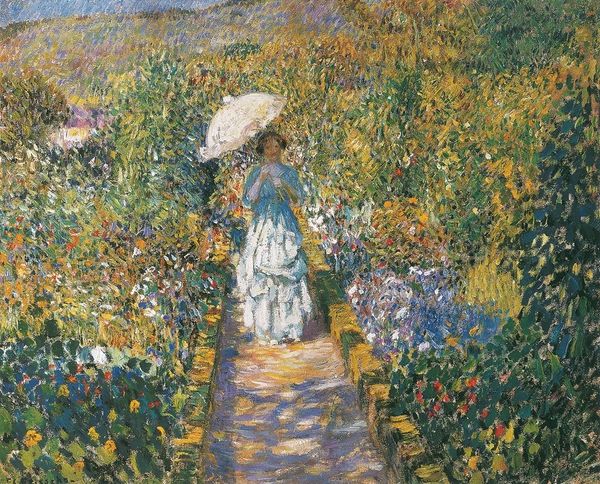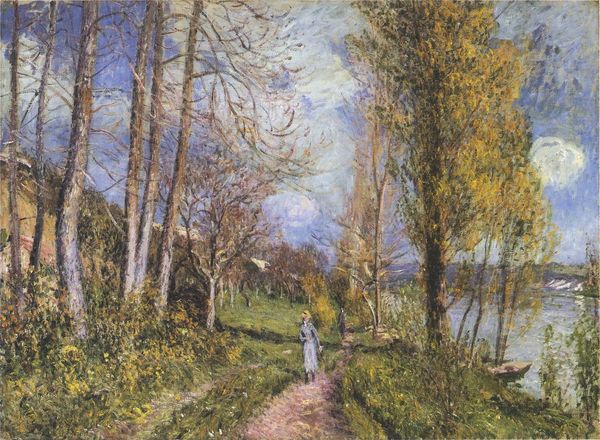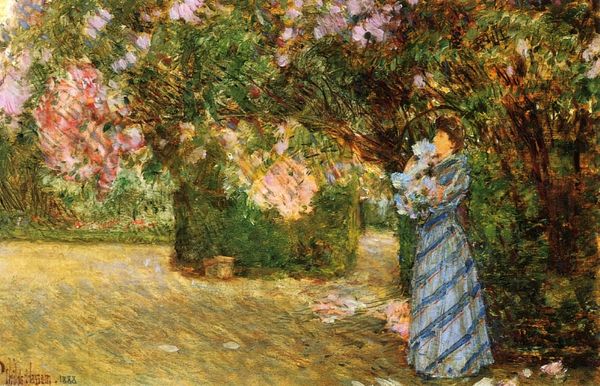
Copyright: Public domain
Curator: We’re looking at “The Bathers” by Childe Hassam, created around 1904. It’s an oil on canvas painting done in the Impressionist style. Editor: Immediately, I see this broad, almost frieze-like composition and I’m struck by the hazy application of paint, and the repeated verticality of the slender trees that frame the nude figures on the landscape. It all suggests an almost detached, classical feeling. Curator: The Impressionists, while capturing fleeting moments in nature, were not immune from larger cultural currents. Hassam was, arguably, deliberately engaging with classical themes and reinterpreting them for his time. The idealization of the female nude certainly speaks to this, though softened by the informal, modern touch of Impressionism. Editor: Yes, but it is fascinating to think about how these nudes, bathed in dappled sunlight, are made. How much labor went into grinding pigments, stretching canvases, and transporting materials outdoors to make a "spontaneous" painting? Curator: Good point. These weren’t fleeting actions, but constructed, curated choices, very deliberately performed. It seems Hassam is not just showing us a group of bathers, but perhaps, the relationship between the female form, natural landscape, and some implicit societal idea of beauty, virtue, or access. Editor: Or even just access to leisure? This isn't simply about beauty or virtue. Who is working to enable this leisure activity? What class position do these women occupy to even allow for this type of "natural" setting in this way? Curator: That's a potent intersectional viewpoint: access, gender, labor, class. Perhaps "The Bathers" functions as an implicit reflection on the societal power structures and class divides prevalent during Hassam's time, all draped with this guise of light-hearted Impressionism. Editor: Exactly. By thinking of the materials and modes of its production, we can then interrogate Hassam’s image and our reaction to it. What seemed "natural" is revealed to be rather culturally produced through and through. Curator: A fitting reminder of art’s ability to both reflect and construct social narratives! Editor: Absolutely, and thinking through the means of making certainly allows us to consider art in new, more meaningful ways.
Comments
No comments
Be the first to comment and join the conversation on the ultimate creative platform.
